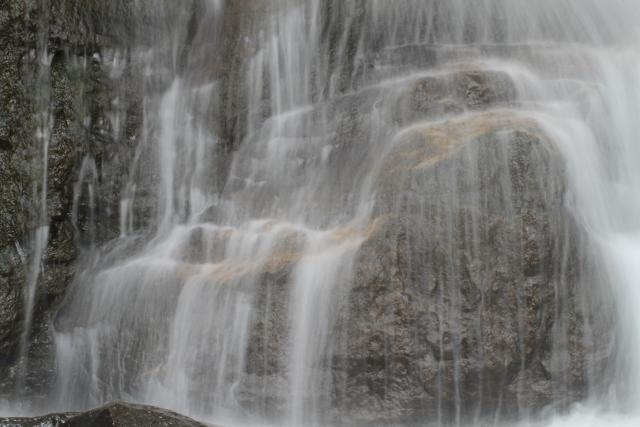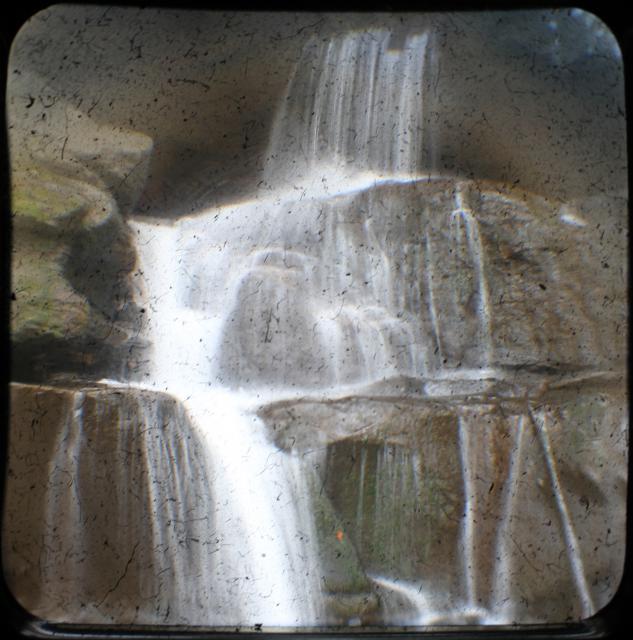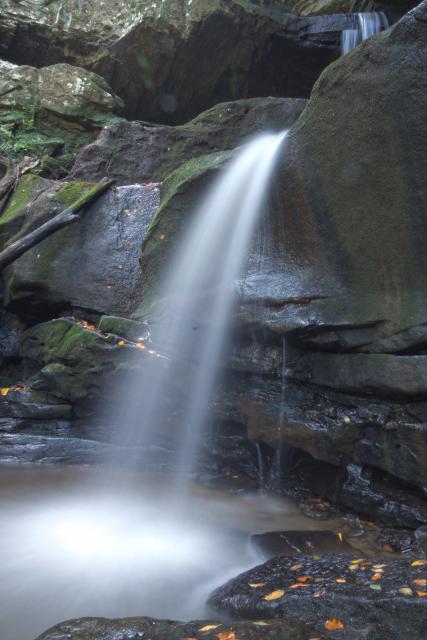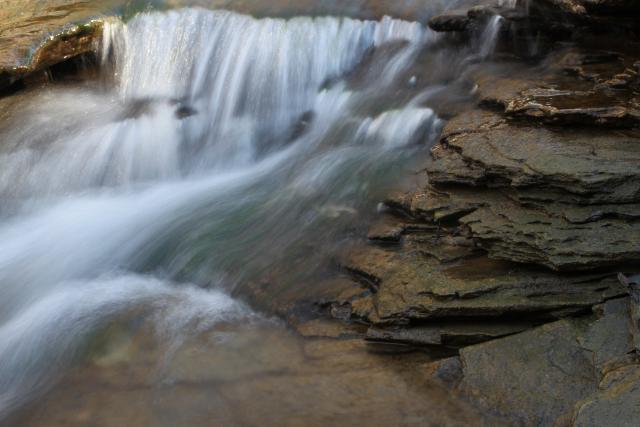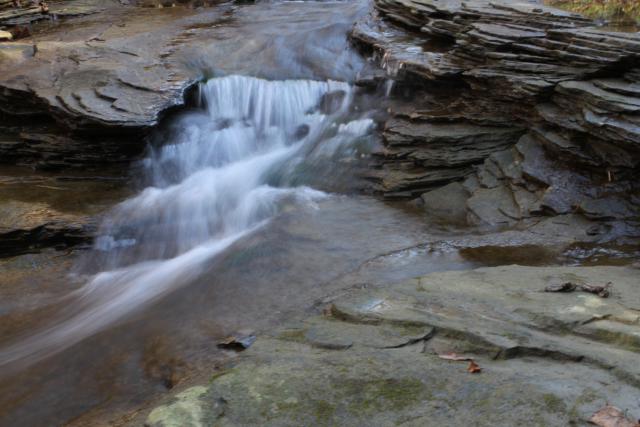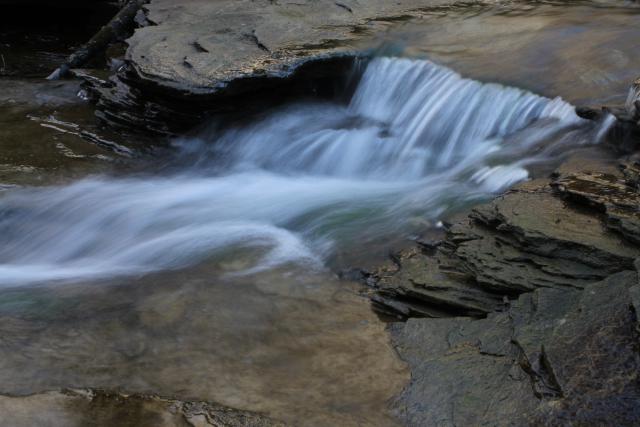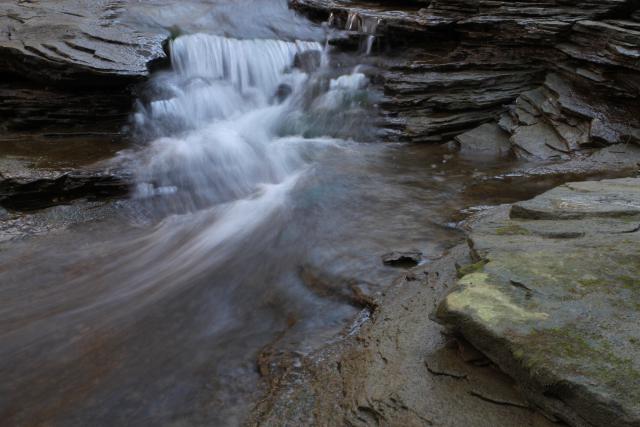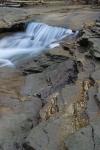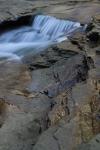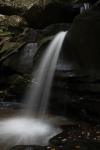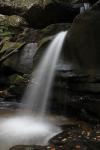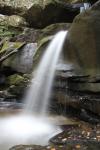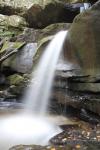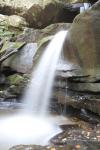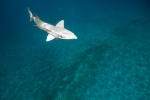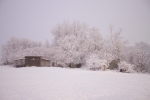waterfall
Hocking Hills (part 3)
ktuli — Sun, 06/30/2013 - 20:31
Still (slowly) making my way through the photos from Hocking Hills. Here's a nice assortment of vertically oriented photos...
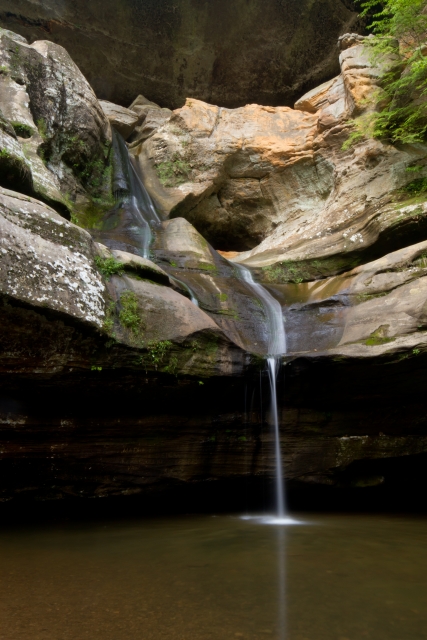 |
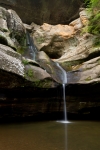 Cedar Falls |
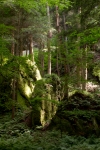 Conkle's Hollow |
|
 Cedar Falls Trailhead Sunset |
|
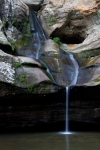 Cedar Falls |
Stay tuned, the best is yet to come...
- Bill
Niagara Falls: Night Lights & HDR
ktuli — Tue, 05/15/2012 - 20:56
So on our trip to Niagara Falls, we only managed to stop at the falls the first night. It was cold (and the other days were colder with rain/snow/sleet), but I had the thought to try some HDR to see about getting a nice shot of the falls but maintaining the color from the lights.
The results are mediocre at best. In particular, the bottom right corner is screwed up in the shadows (and I don't know how to fix it), and it seems (at least with the green lights) the color has shifted a bit.... but being my first attempt, I figured I'd share just the same.
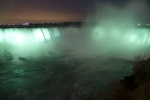 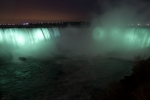 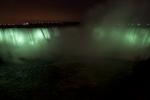 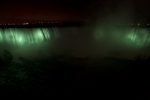 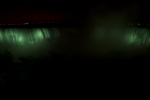 |
 |
Technical Data: Canon EOS 7D, Canon EF-S 18-55mm f/3.5-5.6 II at 22mm, 2.5, 1.3, 0.6, 1/6, 1/3 sec respectively at f/4. ISO 800. RAW processing in Adobe Camera RAW and HDR processing Adobe Photoshop CS5.
If you mouse over each smaller thumbnail, you will see the series of shots used to create the HDR image. Individually, you can see that no single shot could capture everything - either the lights on the falls would over expose or the shadow areas would just become fields of black.
Looking at it again really illustrates just how bad the HDR processing is, and I definitely think it warrants trying another processor to see if I can come up with better results... but for now, you get the idea.
- Bill
McConnell's Mill Waterfall with Macro
ktuli — Tue, 04/19/2011 - 19:25
Normally, you wouldn't use a 100mm macro lens to photograph a waterfall. Most times, if you're standing at the base of a waterfall, you reach into your bag and pull out a wide angle lens to capture the whole scene.
However, a couple weeks ago, I decided to try a longer focal length to get a more intimate view of only a portion of the waterfall. This is the result...
Technical Data: Canon EOS 7D, Canon EF 100mm f/2.8L Macro IS USM, 1 sec at f/32. Image Stabilization on. ISO 200. No post production.
Why This Photo: I have been to this waterfall several times so far, and I decided I wanted to find a different shot to come back with. Along with the TTV waterfall shots, I decided to isolate only a portion of the falls - to concentrate on the look of water cascading over the rough stone surface.
What Works: The slow shutter speed produced a nice soft look to the flowing water, while the sharp focus on the rock texture provides the nice juxtaposition between the two - particularly with the large portion of rock only partially obscured by the water in the bottom right corner.
What Doesn't Work: There is a small rock protruding into the frame in the bottom left corner. Additionally, the flow of the water is not as strong on the left edge of the frame. Perhaps a slightly tighter crop would eliminate these problems.
Drop me a comment and let me know what you think.
- Bill
TTV: McConnell's Mills Waterfall
ktuli — Wed, 04/06/2011 - 20:49
Ok - got another TTV shot for you today. This was the first time I'd taken the TTV rig anywhere other than Phipps, so it was kind of fun. Trying to scramble up the rocky hillside to this waterfall while juggling my camera bag, my DSLR, tripod, TTV rig, and monopod on the other hand was not so much fun.
I really don't know why these photos have so much more grit and grain to them than previous examples. It possibly could be because of the difference in focal distances - most of the TTV done at Phipps is done within a couple feet of the subject, here I was working in the tens of feet.
I also found that focusing was much more difficult this time around. I had a razor thin range on the lens that would put the scene into focus, and even then it was just a touch away from focusing purely on the grit and grain on the Argus' viewfinder lens.
Regardless, here's another shot I brought back on Sunday...
Technical Data: Canon EOS 7D TTV Argus Seventy-Five, Tokina AT-X M35 Pro DX AF 35mm f/2.8 Macro 1:1, 1/5 sec at f/8. ISO 200. Monopod and handheld. Cropped in Photoshop CS5 Extended.
Why This Photo: I've shot this waterfall before and I thought that since I was at the park for a field workshop for my class, that I would give it the TTV treatment to change things up instead of coming back with the same shot again.
What Works: The curving path of waterfall is pleasing to me, while the slow shutter speed produces that nice soft fluffy water.
What Doesn't Work: The grit and grain is just too distracting this time around I think - perhaps I need to clean up the viewfinder a little. Additionally, that razor thing focus range means that this shot is a little soft. And the long shutter speed to draw out the detail in the rocks produces a completely white stream of water that is a bit overpowering.
Even with its flaws, I still really like the shot, and may be convinced to head back in the summer with a different TLR (perhaps the Anscoflex II) and try it again.
Drop me a comment and let me know what you think!
- Bill
HDR: McConnell's Mill Waterfall
ktuli — Wed, 03/30/2011 - 17:48
As promised many, many ages ago, I've finally processed that set of waterfall photos into an HDR image.
I used a freeware program called Picturenaut to produce the final HDR image. In the end, I like the image but wonder if the HDR was even worthwhile in this particular case (or given the range of exposures I used to built it).
After completing the HDR, here are my thoughts on the results:
- I should have cleaned up the scene some more - at this point, I find all the dead leaves distracting, and a nice clean rock and water scene would have been more pleasing.
- I need to pay more attention to the lens flares and water droplets on the front of the lens because they might not have been distracting in the original shots (and probably not even noticed on the LCD on the back of the camera), but they definitely are noticeable now.
- I should have selected a wider range of exposures to use for this kind of HDR set. Particularly, I should have explored the darker end of the set more - perhaps expanding down a further stop or two.
- I should have figured out what that spot in the middle of the frame was.
All in all, I am actually pretty pleased.
I've seen so many HDR images that have horrible halos around everything that they looked like you were looking at the scene through some crappy 3D vision glasses. As I'm sure you know by now, I am not a huge fan of post production work. I like to get the shot right once in the camera and leave it at that. I'm slowly coming around, but I still don't want to look at an image and tell it has been so overworked and couldn't possibly have come from a camera directly. It works for some folks, and sometimes it looks nice, but it just isn't for me.
Remember to stop back and check out the original post to get a bit of comparison, then drop me a comment and let me know what you think.
- Bill
Cedar Creek Waterfall (part 2)
ktuli — Thu, 11/18/2010 - 21:52
I guess to call this a waterfall is a bit of a stretch, but I'm not sure what else to call it. Regardless, here are several more angles of it.
All Photos Technical Data: Canon EOS 7D, Tokina AT-X M35 Pro DX AF 35mm f/2.8 Macro 1:1, 1/3 sec at f/22.6. ISO 200. Dolica AX620B100 tripod. No post production. Cedar Creek Park, Westmoreland County, PA.
I know the middle one is pretty similar to yesterday's, but they are different angles. I like how each shot is different and has its own feel. Pick your favorite and drop me a comment with your critique.
- Bill
Cedar Creek Waterfall (part 1)
ktuli — Wed, 11/17/2010 - 19:11
Technical Data: Canon EOS 7D, Tokina AT-X M35 Pro DX AF 35mm f/2.8 Macro 1:1, 1/3 sec at f/22.6. ISO 200. Dolica AX620B100 tripod. No post production. Cedar Creek Park, Westmoreland County, PA.
Why This Photo: I was trying multiple angles of this small waterfall, this may be my favorite (maybe... I keep changing my mind).
What Works: The relatively long shutter speed worked to produce the soft, blurred stream of water, and the composition produces a very nice balance of the elements in the photo. The large flat rocks in the foreground provide a nice starting point for the viewer's eyes, leading into the striated layers of the rocks further back which curve the direction of the photo to the waterfall which rests nicely on one of the thirds. The water itself being the main focus of the shot produces a final line back out of the shot with the interesting curve of the water's path.
What Doesn't Work: Honestly, the image seems fairly monochrome (perhaps it would be better as a full black and white job). A splash of color might have brought some more "life" to this photo.
Like I said, I have several other angles of this small waterfall to share, so perhaps I'll get to them soon. For now, leave a comment and let me know what you think of this shot.
- Bill
Poll: Redo or Undo
ktuli — Sat, 11/13/2010 - 22:01
So today's trip to Cedar Creek Park was pretty successful. I'll have several good photos to share from the trip, but today I want to talk a little about deleting photos from the camera.
I usually am fairly good about being careful when deleting photos through the camera, but every once in a while I have a bunch I'm deleting and I zone out and delete one too many, or (as in the case with my SeaLife DC1200) sometimes confusing menus cause an unwanted delete of more than I expected. It has happened before, and I'm sure it will happen again, and you might not think it, but it'll probably happen to you someday too.
Today, I accidentally deleted a photo I wanted and decided I would simply try to replicate it. But also when I got home, I used Pandora Recovery to undelete the file from my compact flash card. I've used Pandora Recovery a couple times before, and really like it as a piece of software.
First, it is free. If want to download and use it for free, you definitely can. I personally am not a fan of doing that for software I like and have sent a small donation to the team to show my appreciation. So while it technically is free, I'd recommend tossing a few bucks their way to support such a good product. The software is small and light, and doesn't try to install any other software you don't want. It isn't adware or nagware. It is just exactly what it says it is. A powerful and easy-to-use tool to recover deleted files.
Pandora Recovery is definitely something that should be in every photographer's toolbox for those cases when you really need to get that one shot back. Do yourself a favor and download it today and then send the team a quick PayPal donation - you won't regret it.
So let's look at the photos...
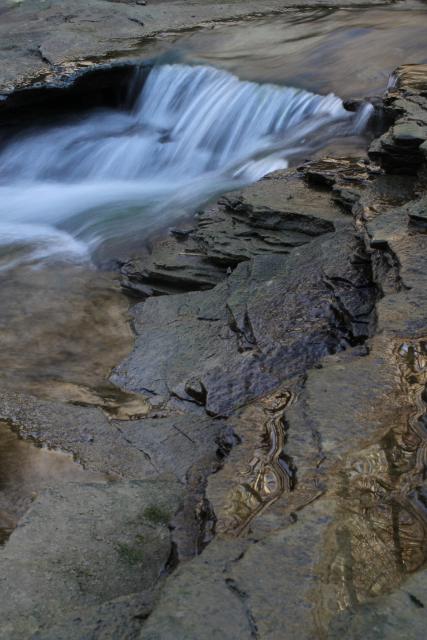 |
||
If you mouse over the thumbnail on the left, the larger image will display that photo. So you can easily compare the two back and forth.
Interestingly enough, despite twenty minutes passing between the two shots, I managed almost identical shots. The technical data was 100% identical, the only thing that differs is the lighting and the framing of the shot from setting the tripod down and angling the ballhead differently.
Technical Data: Canon EOS 7D, Tokina AT-X M35 Pro DX AF 35mm f/2.8 Macro 1:1, 1/3 sec at f/22.6. ISO 200. Dolica AX620B100 tripod. No post production. Cedar Creek Park, Westmoreland County, PA.
I'm going go back to my typical stance here and not share my preferred photo just yet. Place your vote and leave me a comment to let me know which photo you chose and why. Give a full critique if you like.
Oh, and don't forget to check out Pandora Recovery before you need it in a hurry.
- Bill
Time Spent at the Falls
ktuli — Fri, 10/01/2010 - 18:58
Ok - hopefully I can keep my promise from my last post and provide something a bit more appealing today.
Not too long ago, I took a trip up to McConnell's Mill State Park. I really love going to this park, but honestly, I get mixed results with my photography there - I never know whether I'll come back with stuff I like, or a whole card worth of images to delete.
This trip, as I was driving there, I thought about what kind of photography I would like to do that day. Sometimes this works out and I manage to get exactly what I wanted, but more often than not I miss the mark altogether. Most days, I try to head out with no plan whatsoever and just capture whatever I can find. Both ways work, and I flip back and forth between them.
As I cruised up I79, listening to Lotus, I thought perhaps I should delve into HDR. And with that in mind, I decided to take multiple exposures of any shots I did.
Here's one set of results... (if you hover your mouse over one of the thumbnails, it will change the larger image, then you can slide along the row of thumbnails to see the progression in exposure - if it is the first time through, be patient as sometimes my server is a little slow and the image might take a moment to load).
Technical Data: Canon EOS 7D, Sigma 10-20mm f/4-5.6 EX DC HSM AF at 16mm, 1.3, 2, 3.2, 5.2, 8, 12, 21 sec respectively at f/28.1. ISO 200. Dolica AX620B100 tripod. No post production. McConnell's Mill State Park, Lawrence County, PA.
So for the most part, a lot of those images don't really work by themselves, but the hope is that I can eventually run these through some HDR processing and get a super image out of them.
If you're unfamiliar, HDR works by taking a set of differently exposed images and merging them into a single image with a much greater detail by including a high dynamic range of sensitivity from the darkest to lightest details. Our eyes naturally can see a much wider range in sensitivity to light than our cameras can, so using a post production process like this is the way around that limitation.
I'll be honest, I've never done any HDR work before, so hopefully this works and then I'll eventually share the final product here.
Thanks for stopping by, leave a comment and let me know what you think of these photos or any experience you have with HDR.
- Bill
Horseshoe Falls & Light Rays
ktuli — Fri, 07/16/2010 - 18:09
I need another trip up to Niagara Falls. It has been almost three years since I was there last, and it has always been one of those places I've really liked - ever since I was a child. I remember going with my family when I was younger, and the most recent trip was made specifically to get engaged, so obviously it holds special meaning for me.
I know I just got back from vacation not too long ago, but I could use at least a quick weekend trip.
Technical Data: Canon EOS Digital Rebel XT, Canon EF-S 18-55mm f/3.5-5.6 II at 27mm, 1/320 sec at f/13, ISO 100. No post production. Niagara Falls, Ontario, Canada (yes, if you want to go to NF, it really is only worth going to the Canadian side).
Obviously, the main challenge with photographing Niagara Falls is to capture the power of the falls, and the awe inspiring nature of it, and the absolute grandeur of something that can't help but make you feel the overwhelming feeling that this world is shaped by forces far beyond our comprehension. Good luck... ;)
- Bill

